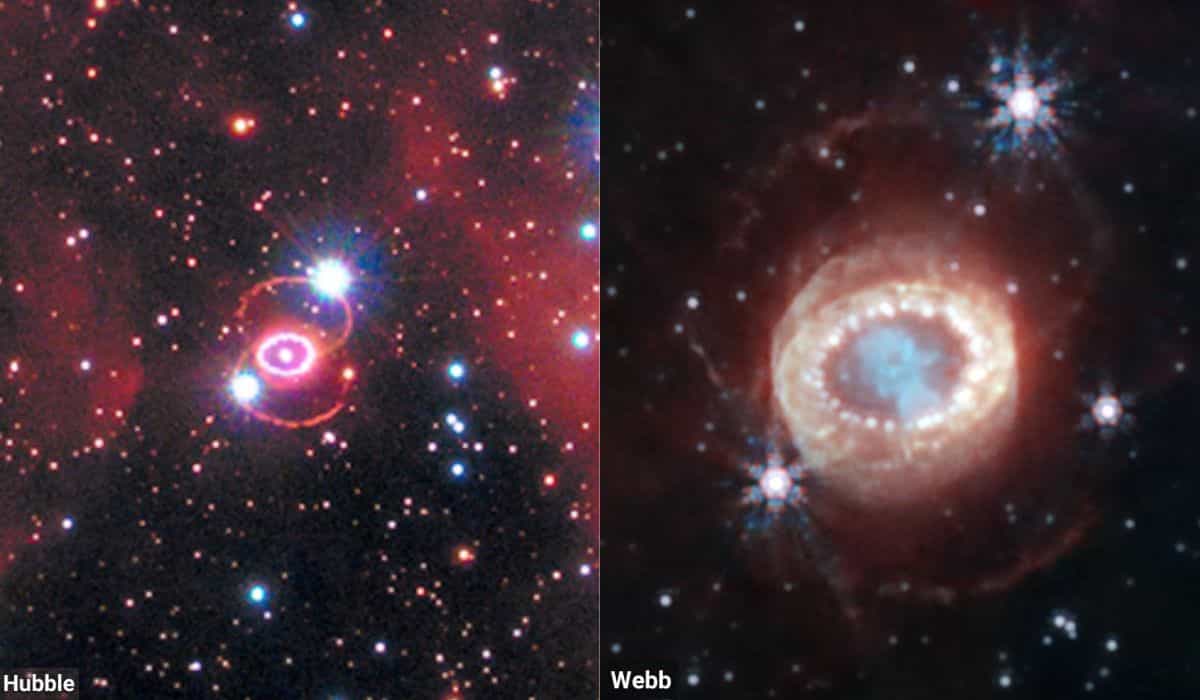
The James Webb Space Telescope has managed to capture new details of Supernova (SN 1987A) through its infrared camera. Meanwhile, the Hubble Space Telescope ‘celebrated’ the new images obtained by James Webb by sharing observations of the same Supernova that it has been studying since the 90s.
+Elon Musk Reveals X (Twitter) to Gain Video and Audio Calls
+James Webb captures fascinating image of famous spiral galaxy
A ‘supernova’ is characterized by a powerful and luminous stellar explosion. SN 1987A is located about 168,000 light-years away from the Large Magellanic Cloud, the largest satellite galaxy of our Milky Way.
In the new image of the Supernova in question, it’s possible to observe a central structure resembling a ‘lock’. According to NASA, this center is filled with gas and dust clumps ejected by the supernova explosion, and this dust is so dense that not even the infrared light detected by James Webb could penetrate it.
The new observation could provide fresh insights into how supernovas evolve over time, in collaboration with the repeated observations, since the 90s by Hubble, which have helped shed light on the final stages of stellar evolution.
Floating like a cosmic jellyfish is the iconic supernova SN 1987A.
Webb has given us the most clear & detailed look yet, revealing a new feature — small crescent-like structures thought to be part of the outer layers of gas shot out from the explosion: https://t.co/IJJAfRDXHG pic.twitter.com/6Ct8T7EiMx
— NASA Webb Telescope (@NASAWebb) August 31, 2023
Since 1990, Hubble has observed Supernova 1987A.
This wide-field view shows a bright ring around the central region of the exploded star that's made of material cast off by the star about 20,000 years before its death.
More in this thread
pic.twitter.com/Ngi04NQu3Y
— Hubble (@NASAHubble) August 31, 2023

